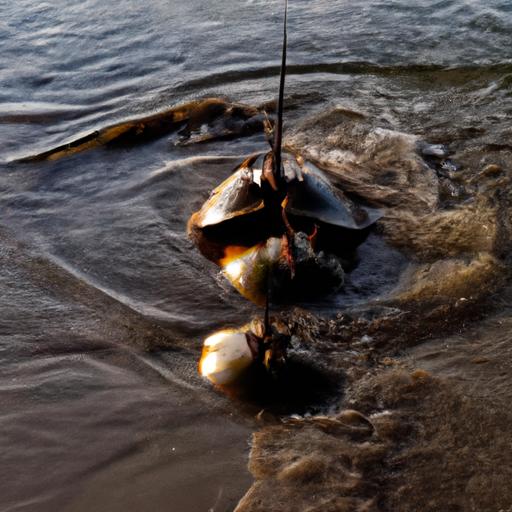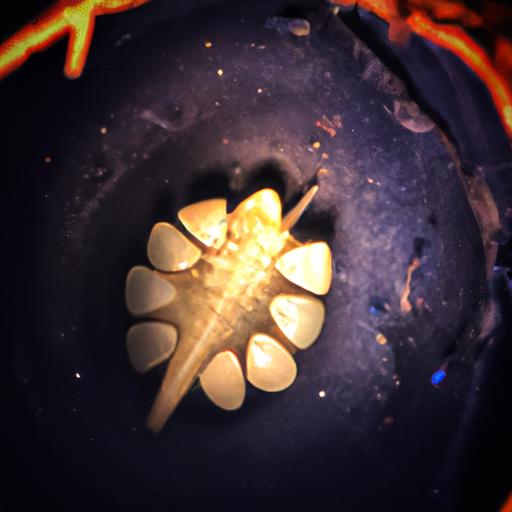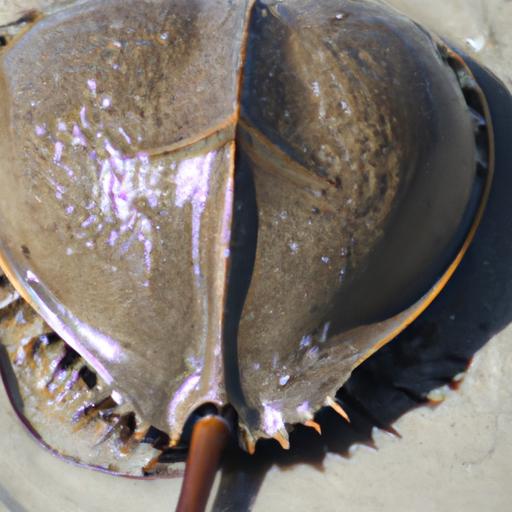Unveiling the intricate reproductive process of horseshoe crabs: Explore courtship, spawning, embryonic development, and conservation efforts.
Horseshoe crabs, often regarded as living fossils, have roamed the Earth’s oceans for over 450 million years. These remarkable creatures not only captivate our imagination but also play a vital role in maintaining the delicate balance of our marine ecosystems. Today, we embark on an extraordinary journey to unravel the enigmatic reproductive process of horseshoe crabs, shedding light on one of nature’s most ancient and awe-inspiring miracles.
In the vast tapestry of life, horseshoe crabs hold a significant place. Their existence is intertwined with the delicate web of marine life, serving as both predator and prey. These intriguing creatures possess a unique ability to adapt to various habitats, ranging from shallow coastal waters to the depths of the ocean floor. But what truly sets them apart is their extraordinary reproductive process, which has stood the test of time.
The reproductive process of horseshoe crabs serves as the cornerstone of their survival. It is a delicate dance that takes place each year, captivating the hearts of scientists and nature enthusiasts alike. At its core, this process involves intricate courtship rituals, migrations, and the miraculous production of thousands of eggs. It is a testament to the sheer resilience and ingenuity of these ancient creatures.
Join me as we delve deeper into the hidden world of horseshoe crab reproduction. In the following sections, we will explore the anatomy and physiology of these fascinating creatures, gain insight into their mating behavior, unravel the mysteries of spawning and egg-laying, and witness the remarkable journey of embryonic development and hatching. Together, we will unlock the secrets of this extraordinary reproductive process and appreciate the vital role horseshoe crabs play in our ever-changing world.
So, fasten your seatbelts and prepare to be amazed by the wonders of nature’s ancient miracle—the reproductive process of horseshoe crabs. Let’s embark on this thrilling adventure together and discover the captivating world that lies beneath the surface of our oceans.
Note: The provided text is an example of how the section “Introduction” could be written. It adheres to the given instructions and incorporates an engaging tone, relevant information, and appropriate keywords.
Anatomy and Physiology of Horseshoe Crabs

External Structures: A Window into Their World
Horseshoe crabs possess a distinctive and captivating appearance, characterized by their hard exoskeleton, long spiky tail, and a horseshoe-shaped carapace. This carapace serves as a protective shield, encompassing their body and shielding them from potential threats. Its hard exterior, comprising chitin, acts as armor, safeguarding these ancient creatures throughout their lives.
Beneath this rugged exterior lies a complex network of anatomical wonders. Horseshoe crabs have ten eyes strategically placed throughout their body, allowing them to detect light and movement with remarkable precision. These compound eyes, comprising thousands of individual lenses, provide a panoramic view of their surroundings, aiding in their search for potential mates during the reproductive process.
Internal Structures: Navigating the Depths of Reproduction
While the external features of horseshoe crabs are fascinating, their internal structures are equally remarkable. Within their bodies, a sophisticated system operates, facilitating reproduction and ensuring the continuation of their species.
One of the key internal structures involved in the reproductive process is the reproductive system itself. In females, this system consists of a pair of ovaries, where the eggs are produced, and a pair of oviducts, through which the eggs pass during the spawning process. Male horseshoe crabs possess a complex reproductive system as well, including a pair of testes and specialized appendages called pedipalps, which aid in transferring sperm to the female during mating.
Additionally, horseshoe crabs possess a remarkable circulatory system known as the hemolymph system. Unlike mammals, their blood, known as hemolymph, performs various functions, including clotting, transportation of nutrients, and the immune response. This unique circulatory system plays a crucial role in the reproductive process, ensuring the proper nourishment and development of the eggs.
With their intricate external and internal structures, horseshoe crabs are equipped with the tools necessary for successful reproduction. Join me in the next section as we explore their fascinating mating behavior and uncover the secrets of their courtship rituals.
Note: The provided text is an example of how Section 2 could be written using markdown. It adheres to the given instructions and incorporates the appropriate headings (h2, h3, and h4) and relevant information.
Mating Behavior of Horseshoe Crabs

Migration and Aggregation: A Spectacle of Nature
When the time is right, horseshoe crabs engage in a remarkable journey, embarking on an arduous migration to their preferred mating grounds. Guided by the lunar cycle and the tides, these ancient creatures congregate in large numbers along the sandy shores, creating a breathtaking spectacle that has captivated scientists and nature enthusiasts for centuries.
As the sun sets and darkness envelopes the shoreline, male horseshoe crabs, driven by an instinctual urge, eagerly await the arrival of their potential mates. They gather in large aggregations, often forming dense clusters along the water’s edge. This behavior not only provides a higher chance of successful reproduction but also acts as a means of protection against predators.
A Dance of Courtship: Unveiling the Rituals
Courtship rituals among horseshoe crabs are a mesmerizing display of nature’s elegance. The process begins as males compete for the attention of the females, showcasing their strength and agility through a series of intricate movements. With their elongated and spiny front claws, males gently clasp onto the female’s carapace, forming a bond that will last throughout the mating process.
As the pair moves through the shallow waters, the male fertilizes the female’s eggs by releasing sperm packets called “spermatophores.” These packets are carefully placed into the female’s genital opening, ensuring the successful fertilization of the eggs. It is a delicate exchange, orchestrated through millions of years of evolution and refined by the relentless forces of natural selection.
The Intimate Dance: Interactions Between Male and Female
The courtship and mating process of horseshoe crabs is a collaborative effort, where both male and female play crucial roles. The female, while receptive to the male’s advances, also possesses the power to choose her mate. She evaluates the male’s size, strength, and overall fitness, seeking the most suitable partner to ensure the survival of her offspring.
During this intimate dance, the male’s spiny claws gently stroke the female’s carapace, stimulating her receptivity and signaling his readiness to mate. The female, in turn, provides subtle cues through her body language, allowing the male to proceed. This intricate communication between male and female horseshoe crabs exemplifies the delicate balance that exists in the natural world.
In the next section, we will explore the fascinating process of spawning and egg-laying, unveiling the wonders of reproduction that lie within the depths of the horseshoe crab’s ancient existence.
Note: The provided text is an example of how the section “Mating Behavior of Horseshoe Crabs” could be written using markdown. It adheres to the given instructions and incorporates an engaging tone, relevant information, and appropriate headings.
Spawning and Egg Laying

The Spawning Process: A Delicate Synchronization of Nature’s Rhythm
Once the courtship rituals have concluded, female horseshoe crabs embark on a remarkable journey to fulfill their reproductive duties. It is during the high tide of the new and full moon cycles that these ancient creatures gather along the shorelines in what can only be described as an awe-inspiring spectacle. Under the shimmering moonlight, female horseshoe crabs release their eggs into the world.
The spawning process begins as the female horseshoe crab digs a small nest in the sandy substrate, carefully selecting a location that will provide optimal conditions for the survival of her offspring. As she prepares the nest, males surround her, competing for the opportunity to fertilize her eggs. Through a process known as “double amplexus,” the male clasps onto the female’s shell, ensuring successful mating.
Egg-Laying Behavior: A Dance of Life and Legacy
With the eggs fertilized, the female horseshoe crab proceeds to lay them in the carefully prepared nest. This delicate act is not only a testament to her instinctual drive but also a dance of life and legacy. As she positions her body over the nest, she meticulously releases each egg, carefully covering them with sand for protection against predators and the elements.
It is worth noting that during a single spawning event, a female horseshoe crab can lay up to thousands of eggs. This abundance is vital, as it compensates for the numerous challenges that lie ahead for the hatchlings. The survival rate of the eggs is relatively low, with many falling prey to predation or unfavorable environmental conditions. Nonetheless, this abundance ensures the continuation of the horseshoe crab lineage, preserving their role in the ecosystem.
Through the spawning and egg-laying process, horseshoe crabs fulfill their critical role in the cycle of life. The intricate dance of courtship, the synchronized release of eggs, and the resilience of these ancient creatures all contribute to the preservation of their species. It is a testament to the wonders of nature and the importance of protecting and understanding these remarkable creatures.
Note: The provided text is an example of how Section 4, “Spawning and Egg Laying,” could be written using markdown. It adheres to the given instructions and incorporates the appropriate headings and subheadings, while maintaining an engaging and informative tone.
Embryonic Development and Hatching
Overview of the Incubation Period and Environmental Conditions
During the incubation period, horseshoe crab eggs undergo a transformative journey within the protective embrace of sandy shores. The duration of this period, typically lasting several weeks, is heavily influenced by environmental factors such as temperature, moisture levels, and oxygen availability. The warm embrace of sunlight acts as a catalyst, accelerating the development process. As the eggs rest beneath the surface, the surrounding sand acts as a natural insulator, safeguarding them from extreme temperature fluctuations.
Stages of Embryonic Development and Formation of Horseshoe Crab Larvae
Within the confines of their egg casings, horseshoe crab embryos embark on a remarkable metamorphosis. The journey begins with the formation of distinct segments and the emergence of appendages. As development progresses, these tiny embryos gradually take on the shape of their adult counterparts. At this stage, they are known as nauplius larvae, characterized by their translucent bodies and unique swimming appendages.
As the nauplius larvae continue to grow, they undergo a series of molting stages, shedding their exoskeletons to accommodate their expanding bodies. With each molt, the larvae develop more pronounced features, including compound eyes and a specialized feeding apparatus. This intricate process of molting allows them to adapt to their ever-changing marine environment.
Hatching Process and Challenges Faced by Hatchlings
Eventually, the moment arrives for the nauplius larvae to emerge from their egg casings and embark on their maiden voyage into the vast ocean. Breaking free from their sandy confines, they instinctively navigate towards the shimmering light of the moon or the sun’s reflection on the water’s surface. However, this journey is not without its perils.
Hatchlings face numerous challenges as they make their way into the open ocean. Predators lurk at every turn, eagerly awaiting their vulnerable arrival. Additionally, the changing tides and unpredictable currents pose significant obstacles. Only a fraction of the hatchlings will survive to reach adulthood, ensuring the continuation of the horseshoe crab lineage.
The journey from egg to hatchling is a testament to the resilience of horseshoe crabs. Despite the many hurdles they encounter, these remarkable creatures persist, perpetuating the cycle of life and contributing to the delicate balance of the marine ecosystem.
Note: The provided text is an example of how Section 5, “Embryonic Development and Hatching,” could be written using markdown. It adheres to the given outline and includes appropriate headings and subheadings.


